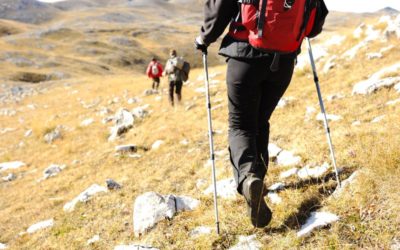Hiking is one of the most popular outdoor activities, and it’s no surprise why. The fresh air, stunning views, and challenging terrain make for an invigorating experience that can leave you feeling refreshed and rejuvenated. However, when it comes to remote hiking trails, there are some essential safety tips that every hiker should know before embarking on their adventure. In this blog post, we will cover everything from what to pack to stories from seasoned hikers who have been in dangerous situations. So let’s get started!
Introduction to Remote Hiking Trails
Remote hiking trails offer a unique challenge that not everyone is prepared for. These trails often take hikers deep into wilderness areas where cell phone service may be limited or nonexistent. It’s important for hikers to understand the risks involved with these types of trails and prepare accordingly. Some of the potential dangers include steep drops, unstable footing, wildlife encounters, and extreme weather conditions. With proper preparation and knowledge, however, hikers can enjoy these trails safely.
Essential Safety Tips for Hikers
1. Plan your route ahead of time: Before setting out on any hike, especially a remote trail, it’s crucial to plan your route carefully. Research the area, check weather forecasts, and study maps to ensure you know exactly where you’re going and how long it will take.
2. Bring appropriate gear: Depending on the length and difficulty of the trail, hikers need to bring specific equipment to stay safe and comfortable. This includes items such as sturdy shoes or boots, sun protection, warm layers, food and water, navigation tools like GPS or map compass, first aid kit, headlamp/flashlight, whistle, and fire-starting materials.
3. Let someone know your plans: Always tell someone about your planned route and expected return time. If something goes wrong, at least someone knows where you were last seen and can initiate search and rescue efforts if necessary.
4. Be aware of wildlife: Different regions have different animals, but all hikers should research local wildlife and learn how to avoid encounters or handle them appropriately. For example, black bear sightings are common in many North American national parks, so knowing how to behave around them can prevent negative interactions.
5. Know basic survival skills: Even experienced hikers can find themselves in unexpected situations, such as getting lost or injured. Learning basic survival skills like building shelter, starting fires, and signaling for help can increase your chances of making it back home safely.

The Best Hiking Gear for Remote Trails
Choosing the right gear for remote hikes requires careful consideration of factors like weight, durability, and functionality. Here are some must-have items for remote hiking trails:
1. Durable hiking boots or shoes with good tread and ankle support
2. Lightweight and breathable clothing made from technical fabrics
3. A high-quality backpack that fits well and distributes weight evenly
4. Plenty of water and a way to purify it (such as a filter or iodine tablets)
5. High-energy snacks and meals that won’t spoil quickly
6. Sunscreen, sunglasses, and a hat to protect against UV rays
7. Navigation tools like a GPS device or map and compass
8. Headlamp or flashlight with extra batteries
9. First aid kit with essentials like bandages, antiseptic, and pain relievers
Stories from Seasoned Hikers
One of the best ways to learn about remote hiking trails is by hearing stories from those who have been there before. We spoke to several seasoned hikers who shared their experiences and advice:
1. “I was once caught in a sudden thunderstorm while hiking in the Rocky Mountains,” said John, a 40-year-old engineer from Colorado. “Luckily I had my rain jacket and tent with me, which helped keep me dry and protected until the storm passed.”
2. “Whenever I go on a remote hike, I always make sure to carry enough water and food for at least two days,” said Sarah, a 35-year-old nurse from California. “You never know what could happen, and being prepared is key to staying safe.”
3. “My favorite part about remote hiking trails is the solitude and peacefulness,” said Mark, a 50-year-old teacher from Montana. “But I also know how important it is to respect nature and follow Leave No Trace principles to preserve these beautiful places for future generations.”
Conclusion
Remote hiking trails offer a unique opportunity to explore some of the world’s most breathtaking natural landscapes. By following essential safety tips, bringing appropriate gear, and learning from seasoned hikers, novice and experienced hikers alike can enjoy these trails safely and responsibly.



